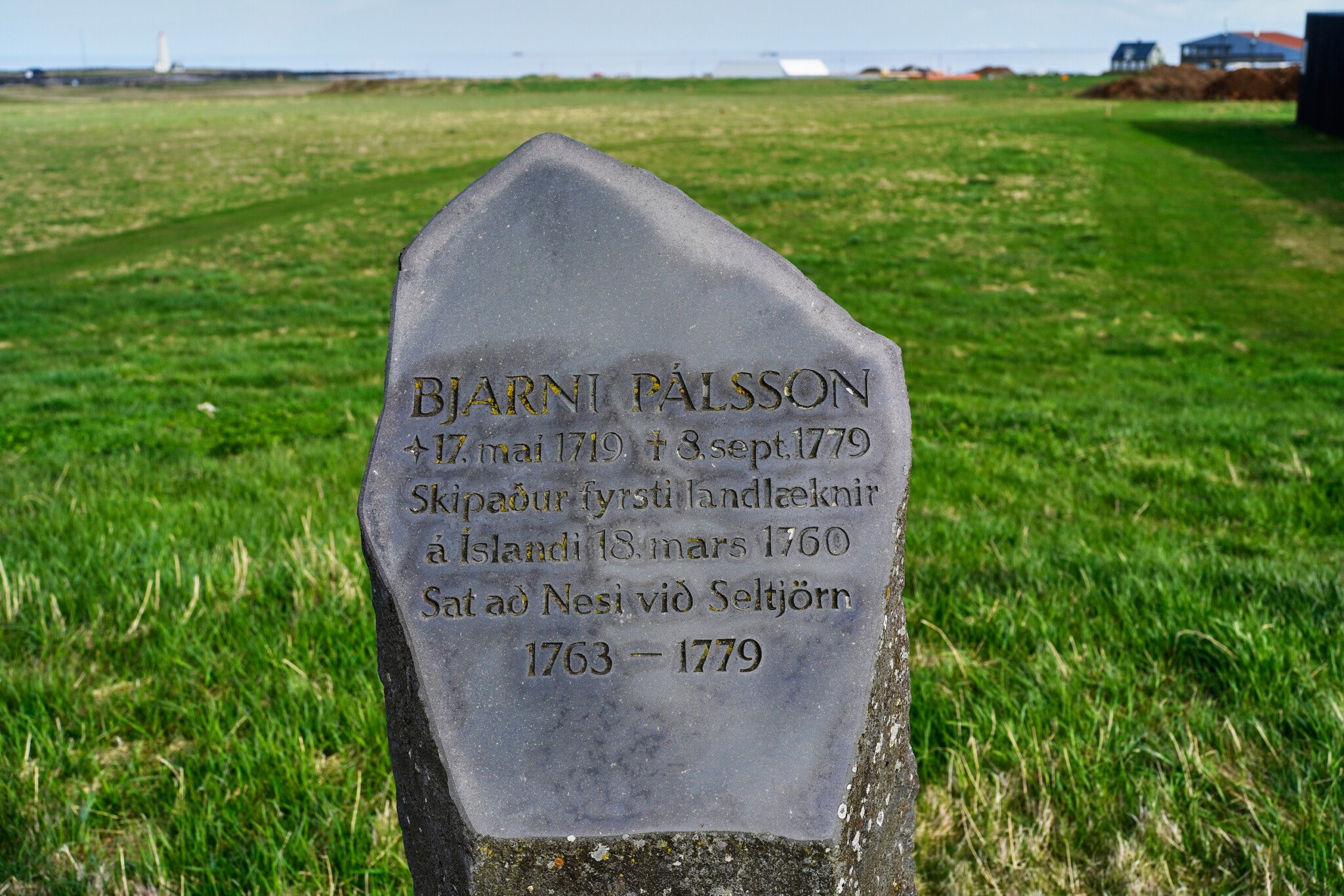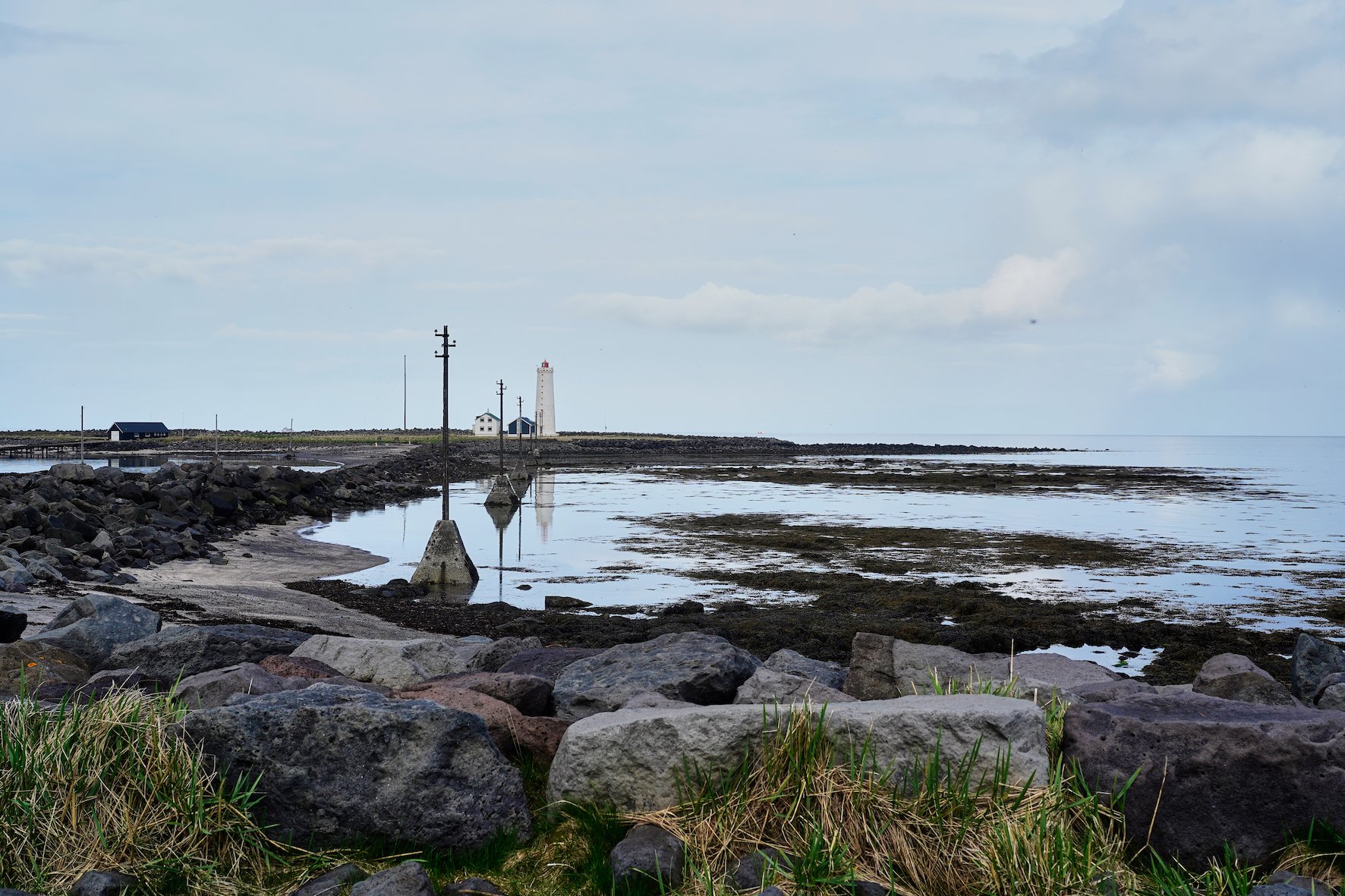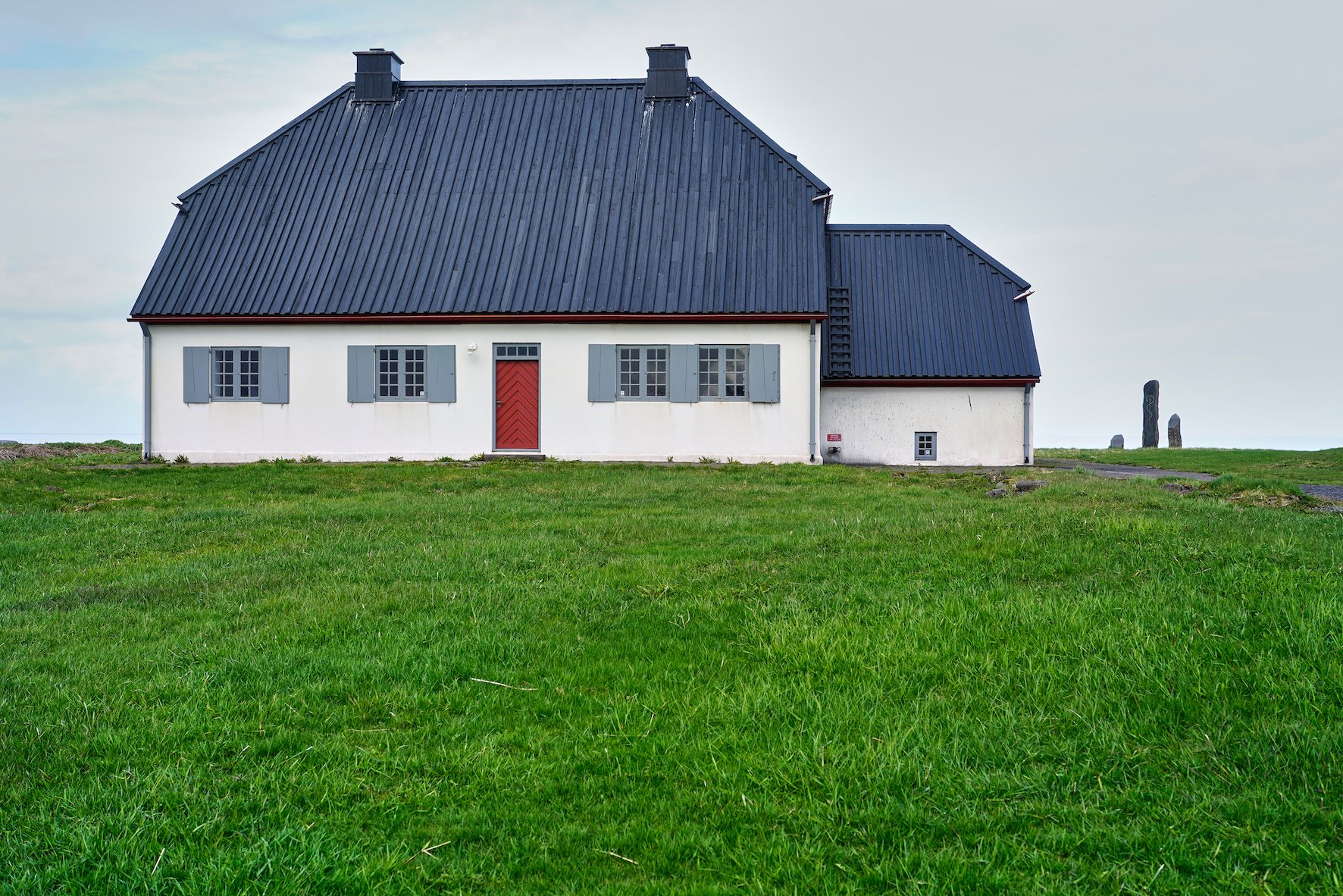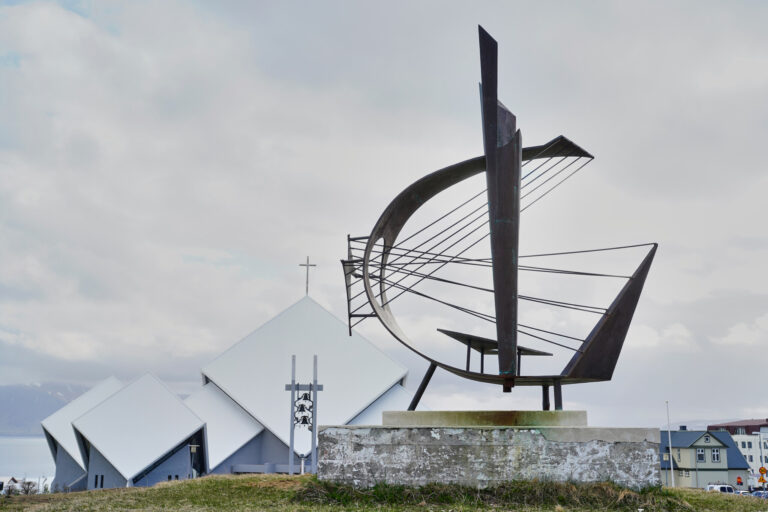The headland from Elliðaá and west of Grótta is called Seltjarnarnes. On the headland lies the capital Reykjavík, except for the westernmost part. The town of Seltjarnarnes sits there, on a 2 km² land, the smallest in the country. When Reykjavik got municipality rights in 1786, the town got most of the peninsula. The town also got the islands Akurey, Engey and Viðey in Kollafjörður fjord. One of the oldest houses in the country, Nesstofa, is in Seltjarnarnes. The house was built between 1761 and 1767 for Bjarni Pálsson, the first Medical Director of Health in Iceland, who lived in Nes by Seltjörn from 1763 until he died in 1779. Nesstofa is protected and was restored to its original design by the National Committee on Architectural Heritage and the National Museum of Iceland under the supervision of Þorsteinn Gunnarsson. One of the oldest schools in the country, Mýrarhúsaskóli, was founded in the western part of the peninsula in 1875 and still operates. Íþróttafélagið Grótti has strong sports activities in Seltjarnarnes. The town also has one of the better and most popular swimming pools in the country, Seltjarnarneslaug.



Seltjarnarnes 09/05/2022 08:44 -10:02 : A7C : FE 2.5/40mm G
Photographs and text: Páll Stefánsson




